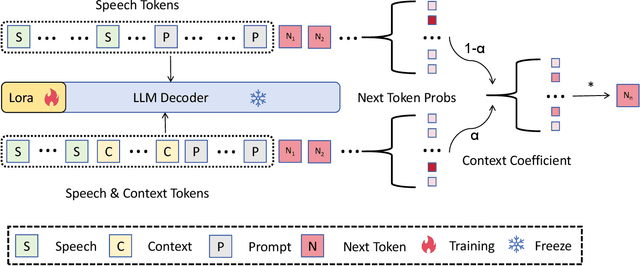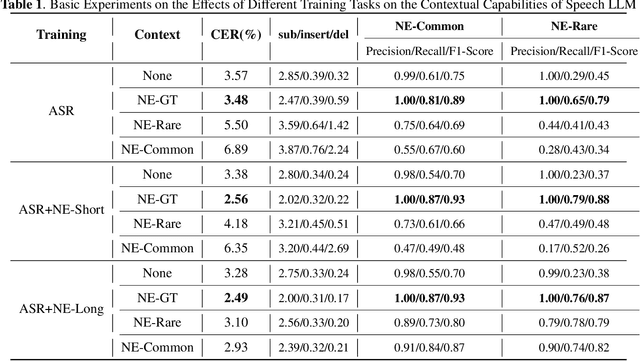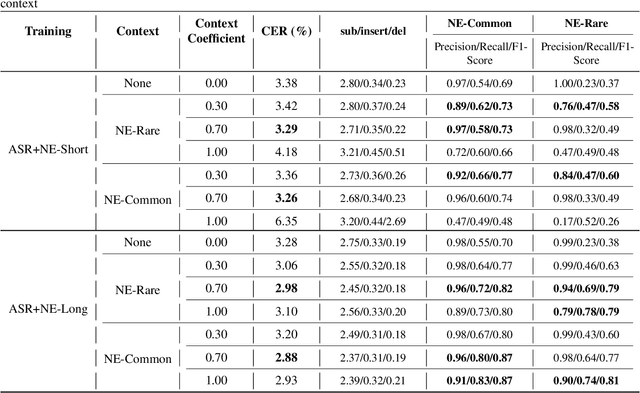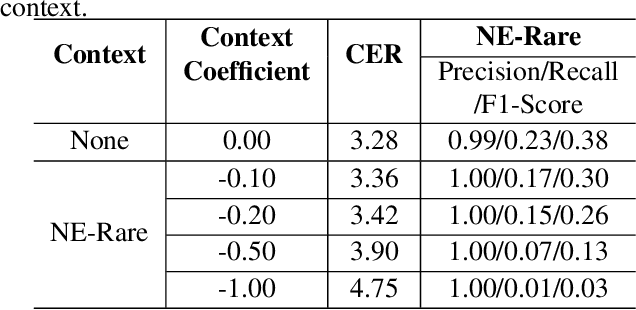Haoyu Li
Gradient-based multi-focus image fusion with focus-aware saliency enhancement
Sep 26, 2025Abstract:Multi-focus image fusion (MFIF) aims to yield an all-focused image from multiple partially focused inputs, which is crucial in applications cover sur-veillance, microscopy, and computational photography. However, existing methods struggle to preserve sharp focus-defocus boundaries, often resulting in blurred transitions and focused details loss. To solve this problem, we propose a MFIF method based on significant boundary enhancement, which generates high-quality fused boundaries while effectively detecting focus in-formation. Particularly, we propose a gradient-domain-based model that can obtain initial fusion results with complete boundaries and effectively pre-serve the boundary details. Additionally, we introduce Tenengrad gradient detection to extract salient features from both the source images and the ini-tial fused image, generating the corresponding saliency maps. For boundary refinement, we develop a focus metric based on gradient and complementary information, integrating the salient features with the complementary infor-mation across images to emphasize focused regions and produce a high-quality initial decision result. Extensive experiments on four public datasets demonstrate that our method consistently outperforms 12 state-of-the-art methods in both subjective and objective evaluations. We have realized codes in https://github.com/Lihyua/GICI
Dual-Stage Safe Herding Framework for Adversarial Attacker in Dynamic Environment
Sep 10, 2025Abstract:Recent advances in robotics have enabled the widespread deployment of autonomous robotic systems in complex operational environments, presenting both unprecedented opportunities and significant security problems. Traditional shepherding approaches based on fixed formations are often ineffective or risky in urban and obstacle-rich scenarios, especially when facing adversarial agents with unknown and adaptive behaviors. This paper addresses this challenge as an extended herding problem, where defensive robotic systems must safely guide adversarial agents with unknown strategies away from protected areas and into predetermined safe regions, while maintaining collision-free navigation in dynamic environments. We propose a hierarchical hybrid framework based on reach-avoid game theory and local motion planning, incorporating a virtual containment boundary and event-triggered pursuit mechanisms to enable scalable and robust multi-agent coordination. Simulation results demonstrate that the proposed approach achieves safe and efficient guidance of adversarial agents to designated regions.
Joint decoding method for controllable contextual speech recognition based on Speech LLM
Aug 12, 2025



Abstract:Contextual speech recognition refers to the ability to identify preferences for specific content based on contextual information. Recently, leveraging the contextual understanding capabilities of Speech LLM to achieve contextual biasing by injecting contextual information through prompts have emerged as a research hotspot.However, the direct information injection method via prompts relies on the internal attention mechanism of the model, making it impossible to explicitly control the extent of information injection. To address this limitation, we propose a joint decoding method to control the contextual information. This approach enables explicit control over the injected contextual information and achieving superior recognition performance. Additionally, Our method can also be used for sensitive word suppression recognition.Furthermore, experimental results show that even Speech LLM not pre-trained on long contextual data can acquire long contextual capabilities through our method.
OmniVTLA: Vision-Tactile-Language-Action Model with Semantic-Aligned Tactile Sensing
Aug 12, 2025Abstract:Recent vision-language-action (VLA) models build upon vision-language foundations, and have achieved promising results and exhibit the possibility of task generalization in robot manipulation. However, due to the heterogeneity of tactile sensors and the difficulty of acquiring tactile data, current VLA models significantly overlook the importance of tactile perception and fail in contact-rich tasks. To address this issue, this paper proposes OmniVTLA, a novel architecture involving tactile sensing. Specifically, our contributions are threefold. First, our OmniVTLA features a dual-path tactile encoder framework. This framework enhances tactile perception across diverse vision-based and force-based tactile sensors by using a pretrained vision transformer (ViT) and a semantically-aligned tactile ViT (SA-ViT). Second, we introduce ObjTac, a comprehensive force-based tactile dataset capturing textual, visual, and tactile information for 56 objects across 10 categories. With 135K tri-modal samples, ObjTac supplements existing visuo-tactile datasets. Third, leveraging this dataset, we train a semantically-aligned tactile encoder to learn a unified tactile representation, serving as a better initialization for OmniVTLA. Real-world experiments demonstrate substantial improvements over state-of-the-art VLA baselines, achieving 96.9% success rates with grippers, (21.9% higher over baseline) and 100% success rates with dexterous hands (6.2% higher over baseline) in pick-and-place tasks. Besides, OmniVTLA significantly reduces task completion time and generates smoother trajectories through tactile sensing compared to existing VLA.
Masked Self-distilled Transducer-based Keyword Spotting with Semi-autoregressive Decoding
May 30, 2025Abstract:RNN-T-based keyword spotting (KWS) with autoregressive decoding~(AR) has gained attention due to its streaming architecture and superior performance. However, the simplicity of the prediction network in RNN-T poses an overfitting issue, especially under challenging scenarios, resulting in degraded performance. In this paper, we propose a masked self-distillation (MSD) training strategy that avoids RNN-Ts overly relying on prediction networks to alleviate overfitting. Such training enables masked non-autoregressive (NAR) decoding, which fully masks the RNN-T predictor output during KWS decoding. In addition, we propose a semi-autoregressive (SAR) decoding approach to integrate the advantages of AR and NAR decoding. Our experiments across multiple KWS datasets demonstrate that MSD training effectively alleviates overfitting. The SAR decoding method preserves the superior performance of AR decoding while benefits from the overfitting suppression of NAR decoding, achieving excellent results.
From Macro to Micro: Probing Dataset Diversity in Language Model Fine-Tuning
May 30, 2025Abstract:Dataset diversity plays a pivotal role for the successful training of many machine learning models, particularly in the supervised fine-tuning (SFT) stage of large language model (LLM) development. Despite increasing recognition of its importance, systematic analyses of dataset diversity still remain underexplored. To address this gap, this work presents a systematic taxonomy of existing diversity-control strategies, which primarily focus on the instruction component, operating at either macroscopic (entire instruction semantics) or mesoscopic levels (instruction units), and furthermore introduces a novel analysis of microscopic diversity within the response component, specifically analyzing the statistical distribution of tokens in SFT training samples. In the experimental evaluation, we construct fixed-size datasets (e.g., 10,000 samples each) from a corpus of 117,000 open-source SFT samples, incorporating six distinct diversity-control strategies spanning macro-, meso-, and microscopic levels applied to both instructions and responses. We then fine-tune LLMs on these datasets to assess the six diversity-control strategies. Results reveal that while macroscopic and mesoscopic strategies lead to higher performance with increasing diversity, the microscopic strategy in responses exhibits both a stronger correlation between model performance and the degree of diversity and superior performance with maximum diversity across all strategies. These findings offer actionable insights for constructing high-performance SFT datasets.
MFA-KWS: Effective Keyword Spotting with Multi-head Frame-asynchronous Decoding
May 26, 2025Abstract:Keyword spotting (KWS) is essential for voice-driven applications, demanding both accuracy and efficiency. Traditional ASR-based KWS methods, such as greedy and beam search, explore the entire search space without explicitly prioritizing keyword detection, often leading to suboptimal performance. In this paper, we propose an effective keyword-specific KWS framework by introducing a streaming-oriented CTC-Transducer-combined frame-asynchronous system with multi-head frame-asynchronous decoding (MFA-KWS). Specifically, MFA-KWS employs keyword-specific phone-synchronous decoding for CTC and replaces conventional RNN-T with Token-and-Duration Transducer to enhance both performance and efficiency. Furthermore, we explore various score fusion strategies, including single-frame-based and consistency-based methods. Extensive experiments demonstrate the superior performance of MFA-KWS, which achieves state-of-the-art results on both fixed keyword and arbitrary keywords datasets, such as Snips, MobvoiHotwords, and LibriKWS-20, while exhibiting strong robustness in noisy environments. Among fusion strategies, the consistency-based CDC-Last method delivers the best performance. Additionally, MFA-KWS achieves a 47% to 63% speed-up over the frame-synchronous baselines across various datasets. Extensive experimental results confirm that MFA-KWS is an effective and efficient KWS framework, making it well-suited for on-device deployment.
Neural Contraction Metrics with Formal Guarantees for Discrete-Time Nonlinear Dynamical Systems
Apr 23, 2025Abstract:Contraction metrics are crucial in control theory because they provide a powerful framework for analyzing stability, robustness, and convergence of various dynamical systems. However, identifying these metrics for complex nonlinear systems remains an open challenge due to the lack of scalable and effective tools. This paper explores the approach of learning verifiable contraction metrics parametrized as neural networks (NNs) for discrete-time nonlinear dynamical systems. While prior works on formal verification of contraction metrics for general nonlinear systems have focused on convex optimization methods (e.g. linear matrix inequalities, etc) under the assumption of continuously differentiable dynamics, the growing prevalence of NN-based controllers, often utilizing ReLU activations, introduces challenges due to the non-smooth nature of the resulting closed-loop dynamics. To bridge this gap, we establish a new sufficient condition for establishing formal neural contraction metrics for general discrete-time nonlinear systems assuming only the continuity of the dynamics. We show that from a computational perspective, our sufficient condition can be efficiently verified using the state-of-the-art neural network verifier $\alpha,\!\beta$-CROWN, which scales up non-convex neural network verification via novel integration of symbolic linear bound propagation and branch-and-bound. Built upon our analysis tool, we further develop a learning method for synthesizing neural contraction metrics from sampled data. Finally, our approach is validated through the successful synthesis and verification of NN contraction metrics for various nonlinear examples.
CAFE-AD: Cross-Scenario Adaptive Feature Enhancement for Trajectory Planning in Autonomous Driving
Apr 09, 2025Abstract:Imitation learning based planning tasks on the nuPlan dataset have gained great interest due to their potential to generate human-like driving behaviors. However, open-loop training on the nuPlan dataset tends to cause causal confusion during closed-loop testing, and the dataset also presents a long-tail distribution of scenarios. These issues introduce challenges for imitation learning. To tackle these problems, we introduce CAFE-AD, a Cross-Scenario Adaptive Feature Enhancement for Trajectory Planning in Autonomous Driving method, designed to enhance feature representation across various scenario types. We develop an adaptive feature pruning module that ranks feature importance to capture the most relevant information while reducing the interference of noisy information during training. Moreover, we propose a cross-scenario feature interpolation module that enhances scenario information to introduce diversity, enabling the network to alleviate over-fitting in dominant scenarios. We evaluate our method CAFE-AD on the challenging public nuPlan Test14-Hard closed-loop simulation benchmark. The results demonstrate that CAFE-AD outperforms state-of-the-art methods including rule-based and hybrid planners, and exhibits the potential in mitigating the impact of long-tail distribution within the dataset. Additionally, we further validate its effectiveness in real-world environments. The code and models will be made available at https://github.com/AlniyatRui/CAFE-AD.
Explorable INR: An Implicit Neural Representation for Ensemble Simulation Enabling Efficient Spatial and Parameter Exploration
Apr 01, 2025Abstract:With the growing computational power available for high-resolution ensemble simulations in scientific fields such as cosmology and oceanology, storage and computational demands present significant challenges. Current surrogate models fall short in the flexibility of point- or region-based predictions as the entire field reconstruction is required for each parameter setting, hence hindering the efficiency of parameter space exploration. Limitations exist in capturing physical attribute distributions and pinpointing optimal parameter configurations. In this work, we propose Explorable INR, a novel implicit neural representation-based surrogate model, designed to facilitate exploration and allow point-based spatial queries without computing full-scale field data. In addition, to further address computational bottlenecks of spatial exploration, we utilize probabilistic affine forms (PAFs) for uncertainty propagation through Explorable INR to obtain statistical summaries, facilitating various ensemble analysis and visualization tasks that are expensive with existing models. Furthermore, we reformulate the parameter exploration problem as optimization tasks using gradient descent and KL divergence minimization that ensures scalability. We demonstrate that the Explorable INR with the proposed approach for spatial and parameter exploration can significantly reduce computation and memory costs while providing effective ensemble analysis.
 Add to Chrome
Add to Chrome Add to Firefox
Add to Firefox Add to Edge
Add to Edge